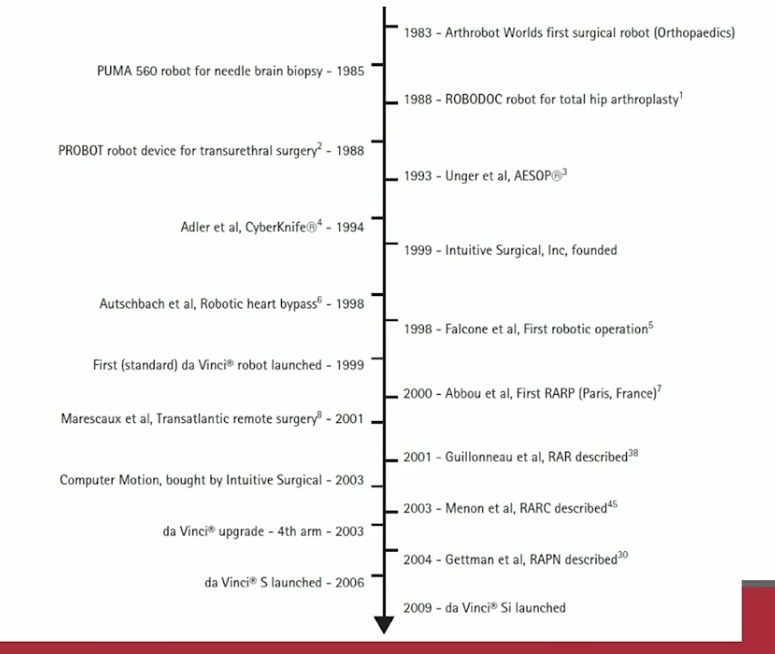How to cite: Davis, Michael S. “Radical Retropubic Prostatectomy: Where Did You Go?” September 14, 2018. Accessed Apr 2024. https://dev.grandroundsinurology.com/radical-retropubic-prostatectomy-where-did-you-go/
Radical Retropubic Prostatectomy: Where Did You Go? – Summary:
Michael S. Davis, MD, reviews the historic shift from radical retropubic prostatectomy (RPP) to a robotic technique dominating practice trends. He discusses the influence of marketing and industry on this trend, as well as cost and outcome benefits of both techniques.
Abstract:
Radical retropubic prostatectomy was the most prevalent surgical procedure for in prostate cancer during the late 1990’s and early 2000’s. However, 1992 marked the advent of minimally invasive radical prostatectomies. This instigated a fervor for minimally invasive techniques. Now, the retropubic technique only makes up about 20% of radical prostatectomies performed today.
In 2003, Intuitive Surgical bought Computer Motion. Over time, Intuitive Surgical became the most prevalent surgical robotic company in the world. Due to demand from physicians and patients, and hospitals’ using this technology to market to patients, trends show a higher rate of robotic surgeries performed in recent years than in any time in history.
Procedure volume grew with the instillation of more robotic systems. Additionally, patients diagnosed with prostate cancer in 2007 were more likely to undergo surgery than those diagnosed earlier.
Evidence supports that robot-assisted radical prostatectomy (RARP) is costlier that RPP per case. Nuanced factors, such as increased patient volume, length of operating room stay, postoperative care, and time patients can return to work, may ultimately mitigate costs to hospitals, payers, and society. However, conflicts of interest and bias most likely influenced these conclusions. More objective evidence estimates that RPP costs significantly less than a robotic technique.
As there is no clear benefit to RARP regarding urinary, sexual, and oncological outcomes, RPP has a comparative economic advantage. Hopefully, refinements of robotics, newer technologies, and competition in the industry will lower prostatectomy costs in the future.
About Innovations in Urologic Practice
Innovations in Urologic Practice (IUP) is an annual CME-accredited conference devoted to updating urologists on the rapidly changing healthcare environment. Topics focus on innovative diagnostic and treatment strategies, controversies, new and currently developing technologies, and challenges in today’s urologic practice. Dr. Davis presented this lecture during the 23rd IUP in 2018. Please visit this page in order to learn more about future IUP meetings.







